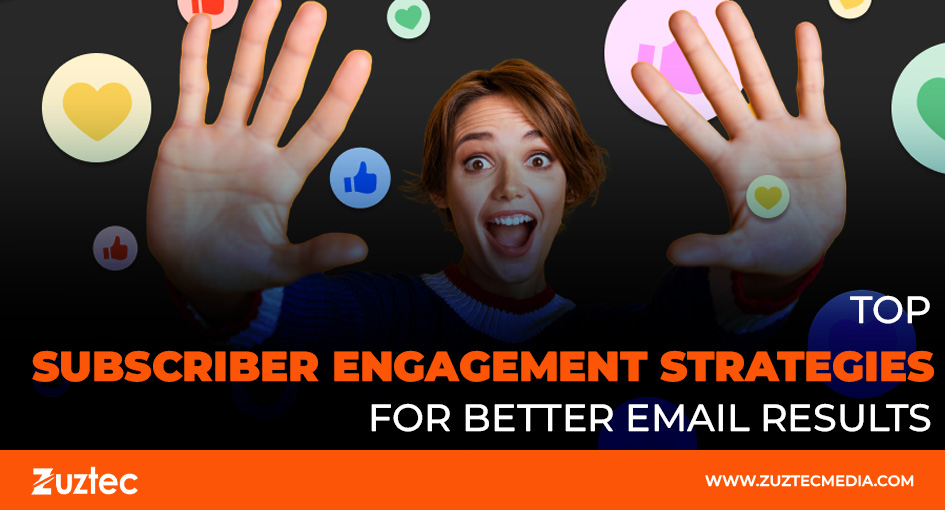
Top Subscriber Engagement Strategies For Better Email Results
Building an email list is one thing, but keeping that list active and engaged is what truly drives results. In today’s competitive digital space, brands need to go beyond simply sending newsletters. Subscriber engagement strategies help you foster real relationships, improve open rates, and convert readers into loyal customers. Without strong engagement, even the largest email list loses its value.
Engaged subscribers are more likely to read your content, share it, and act on your calls to action. They help boost your email deliverability and influence the success of future campaigns. On the flip side, unengaged subscribers can drag your metrics down and even damage your sender reputation.
Great engagement strategies revolve around personalization, value, and timing. By segmenting your audience and delivering targeted content that matches their needs and interests, you can increase interaction and reduce unsubscribes. Tools like automation, behavioral triggers, and dynamic content play an important role in creating these personalized experiences.
Whether you’re launching a product, sending a blog update, or simply nurturing leads, your email content should always be focused on the subscriber. In the sections below, we’ll explore some effective techniques for improving engagement and keeping your audience connected to your brand.
Effective Subscriber Engagement Strategies That Work
To maintain a healthy email list, you need consistent and thoughtful engagement strategies. The key is delivering the right message to the right person at the right time. Personalization plays a major role in this. When users feel that emails are tailored specifically for them, they’re more likely to open and engage.
Start by using names in subject lines and email greetings. It’s a simple touch that boosts attention. Go a step further by segmenting your list based on behavior, demographics, or past purchases. This lets you send highly relevant content to different audience groups, improving response rates.
Another useful tactic is creating interactive content like polls, quizzes, or clickable images. These elements make emails more enjoyable and give users a reason to participate. You can also drive engagement with time-sensitive offers or exclusive deals that create a sense of urgency.
Content Personalization Drives Long-Term Results
Generic emails don’t cut it anymore. With so many messages hitting inboxes daily, personalized content is what helps your brand stand out. Using data you already have, such as user preferences or browsing habits, you can tailor content that feels specific and timely.
In the midbody of your campaign, personalization goes beyond just using a name. If a user recently visited your website or added items to a cart, you can send a follow-up email referencing those actions. Including related products, recent blog posts, or customized recommendations adds more relevance to your message.
Even email send times can be personalized. Many automation tools allow you to send messages when each subscriber is most likely to engage. This kind of targeted scheduling boosts visibility and maximizes the impact of every campaign. Over time, these small touches lead to higher open rates and more loyal subscribers.
The more data you gather and apply, the better your campaigns become. Just be sure to use this information responsibly and always give users the option to update their preferences or opt out. Trust and transparency are key when using personal data to drive engagement.
Consistency and Frequency Matter More Than You Think
How often you email your subscribers can greatly affect their engagement. Too many messages can lead to unsubscribes or spam reports. Too few, and they may forget about you entirely. Finding the right frequency depends on your audience and the type of content you deliver.
It keeps your brand top-of-mind without overwhelming your readers. However, always monitor subscriber engagement strategies to adjust your sending frequency when necessary. If open rates start to drop, consider reducing your email volume or refreshing your content strategy.
Consistency also means sticking to a schedule. Subscribers learn to expect emails from you, which builds familiarity and trust. It’s also helpful to maintain a consistent voice, format, and design. Over time, these elements become associated with your brand and enhance recognition.
Another tip is to optimize your content for mobile users. A large portion of emails are opened on mobile devices, so your content must be easy to read and navigate on smaller screens.
Final Thoughts On Building Subscriber Loyalty
Strong subscriber engagement policies don’t just boost metrics—they build lasting customer relationships. When subscribers feel valued and heard, they’re more likely to stay connected, share your content, and become advocates for your brand.
In conclusion, mastering subscriber engagement strategies means understanding your audience, delivering value, and consistently optimizing your approach. As your email list grows, maintaining high engagement levels will help you generate more leads, conversions, and brand loyalty for years to come.

